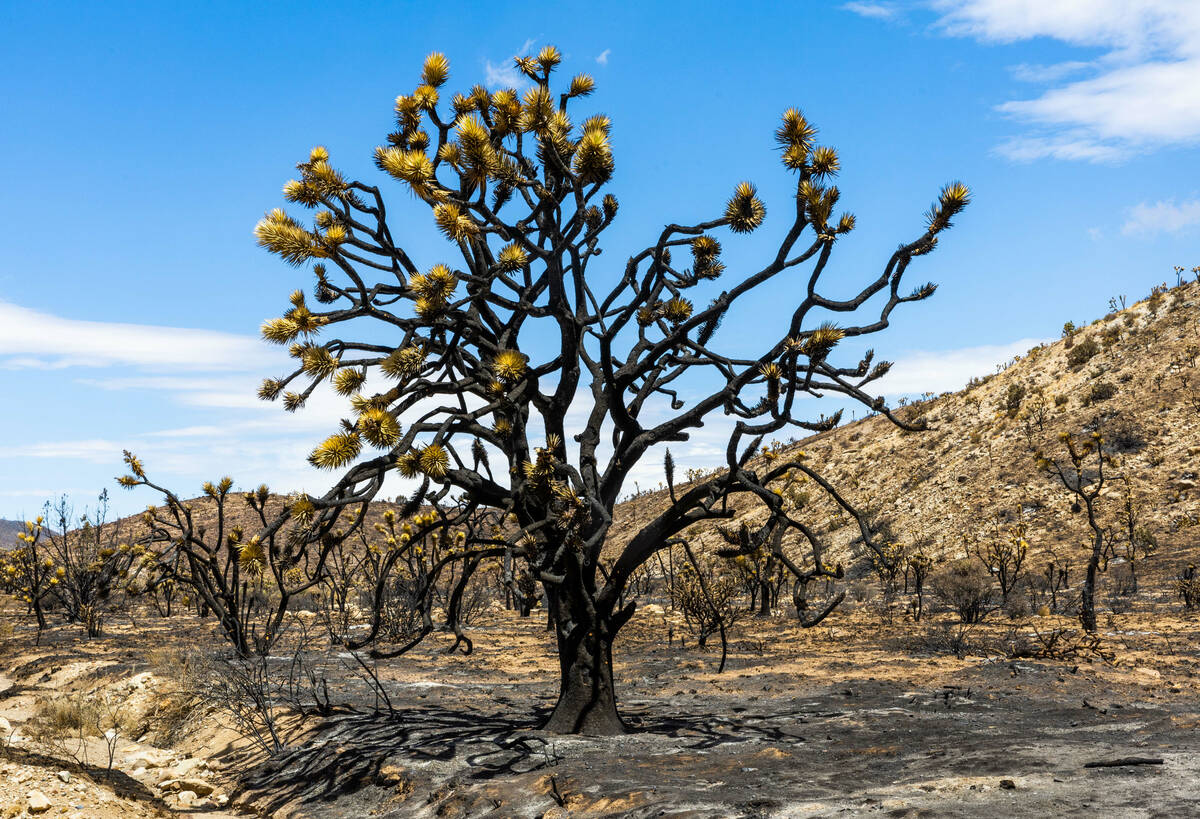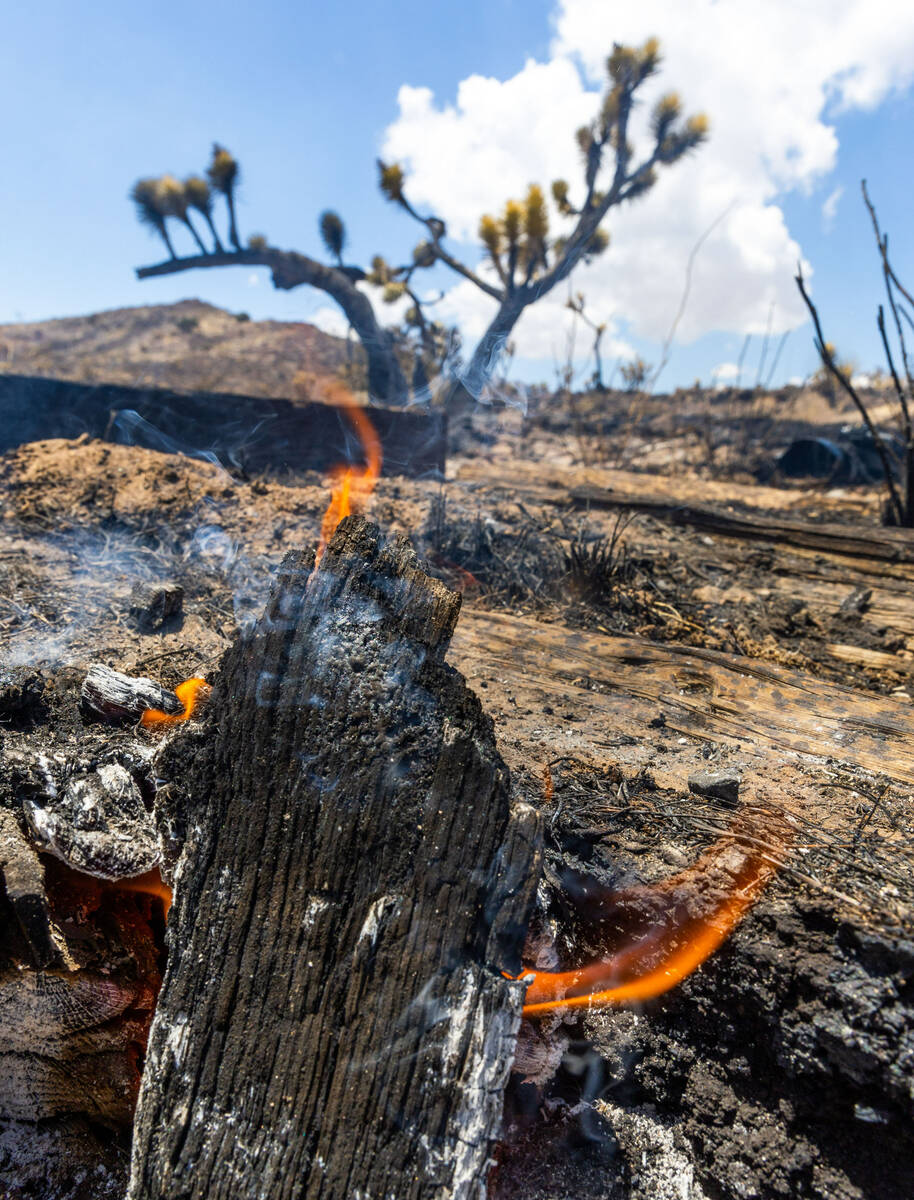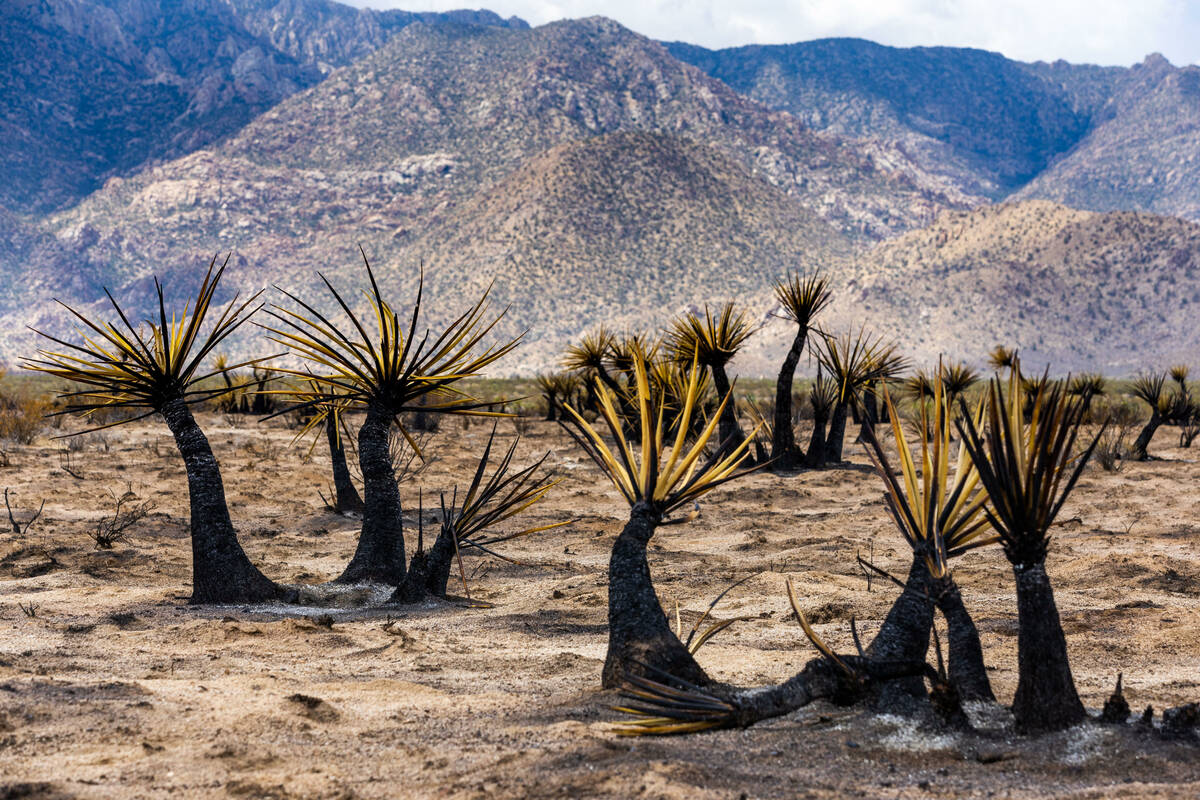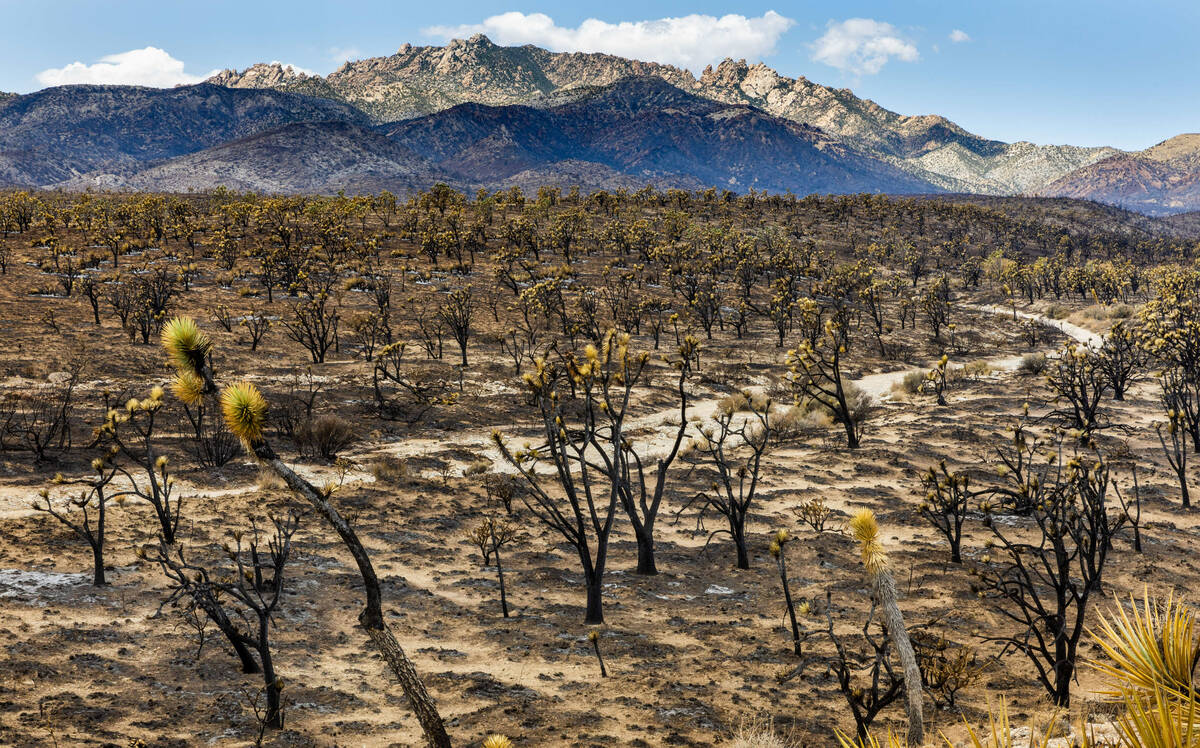Ravaged by fire, Mojave Desert’s famed Joshua trees may be gone forever
A wildfire burning near the California-Nevada border has ravaged parts of the Mojave National Preserve’s famed Joshua tree forests, and experts worry that the massive blaze will forever change the fragile desert ecosystem.
The Joshua trees and other plant species burned by the 93,000-acre York Fire are likely to never regrow, said Debra Hughson, the preserve’s deputy superintendent, leaving behind a permanent reminder of a changing climate on the preserve’s landscape.
“You have just barren, blackened soil, and there’s nothing left but ashes and scraggly Joshua tree stumps sticking up. That doesn’t come back. It’s gone forever,” Hughson said.
The fire has mostly burned inside the preserve’s boundaries but did creep across the Nevada border and scorched some parts of the Avi Kwa Ame National Monument. Park officials said the fire, which is California’s largest of the year thus far, was 93 percent contained as of Monday.
Crews have had to balance their firefighting efforts with the need to not disrupt the sensitive desert ecosystem inside the preserve, which is home to hundreds of rare plant species, including the Joshua tree, and prime habitat for the threatened desert tortoise. That’s meant mostly avoiding the use of heavy equipment such as bulldozers while building fire lines, Hughson said.
Joshua trees, like many desert plant species, struggle to recover from wildfires. Research has shown that there is a chance for Joshua trees to survive if only the top third of the plant is burned, according to the National Park Service.
“In some cases Joshua trees can survive fires. But on a whole, they are not adapted to wildfires. They have a really high mortality during wildfires,” said Lynn Sweet, an assistant research ecologist at University of California, Riverside who studies Joshua trees.
Nurse shrubs such as blackbrush play an important role in helping new Joshua trees sprout. But the fire has wiped out large areas of those nurse plants, as well, which Sweet said only reduces the chances that those Joshua trees can recover.
Preserve officials don’t know exactly how much of the Joshua tree forest has been burned by the latest fire. Hughson said they believe it has caused a similar level of devastation as that of the Dome Fire, which scorched the preserve in 2020 and burned an estimated 1.3 million Joshua trees — or about one-quarter of the region’s contiguous Joshua tree forest.
It’s hard to know what exactly will grow back, but previous fires offer a look at what may be in store for the latest area of the preserve charred by wildfire.
The once-dense Joshua tree forest burned by the Dome Fire has started to transition to a grassier landscape. And while a small number of the Joshua trees in that area did manage to resprout from unburned roots, Hughson said, “it’s not a Joshua tree forest, nor will it ever be again.”
“The ecosystem is changing. It’s not going to be what it used to be. It’s going to be something new and different,” Hughson said. “Overall it will be a more impoverished ecosystem, less biodiversity, less nice overall. But this is a pattern that we’re seeing globally with fairly global rapid change. We’re just part of it.”
Avoiding tortoise habitat
If there is one bright spot, it’s that the fire has mostly managed to avoid the critical habitat of the threatened desert tortoise located inside the preserve.
“We’re thinking and hoping that most of the desert tortoise habitat was unscathed and that most of the desert tortoise are OK,” Hughson said.
The desert tortoise population has been in decline for decades, and the species has been listed as threatened under the Endangered Species Act dating back to 1990.
Most of the effects to the tortoise population from the fire are likely to come from motor vehicles and large equipment responding to the fire, Hughson said. That’s why preserve officials implemented a 25 mph speed limit for all vehicles operating near those habitat areas.
There also have been several biologists out in the field moving tortoises off the road and guiding vehicles in an effort to minimize the chances of tortoises being killed, Hughson said.
A previous version of this story incorrectly quoted Debra Hughson. Hughson was referring to a Joshua tree forest.
Contact Colton Lochhead at clochhead@reviewjournal.com. Follow @ColtonLochhead on Twitter.





















